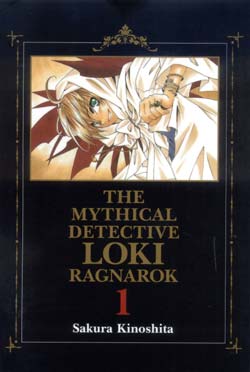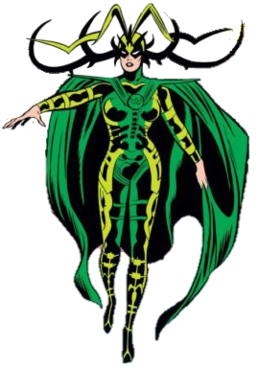Summary
Jake Hallman steps in front of a garbage truck, gets hit, and awakes on the Golden Road in the afterlife. The being greeting him (St. Brendan) at first appears to be Jesus ("You’ve got to be kidding," says Jake) and then an angel, and tells him every deceased person experiences the afterlife according to the expectations formed while alive. Most are incapable of leaving behind their preconceptions; Jake, evidently, is one of the rare "free souls" capable of change.
As such, Jake rejects Brendan's offer to escort him to Heaven, as well as the sales pitch of Brendan's demonic counterpart Mala in favor of Hell. Instead, having always fancied Norse mythology, he takes the rainbow bridge to Valhalla. At first finding it interesting, he eventually realizes its inhabitants are locked in an endless series of revels as they wearily await a Ragnarok that never comes. There Jake meets Freya (not the goddess), a Valkyrie who has also been having doubts about her native afterlife. Together the two undertake a quest on behalf of Odin to rescue the god's son Baldur from Hel, the Norse underworld.
Their quest fails; Hel, queen of Hel, refuses to release Baldur, while the latter, secretly in love with his captor, does not really want to leave. On their way back from the underworld, Jake and Freya inadvertently trigger Ragnarok when they encounter Sigyn and disrupt her age-old mission to relieve the suffering of her husband, the god Loki. The Twilight of the Gods plays then out in the manner foretold in myth, destroying the Norse cosmos. In the aftermath, Brendan and Mala, who had teamed up to monitor the situation, find themselves tapped to become the first human couple on the renewed Midgard, while Jake and Freya become deities.
In the course of the narrative a hydra-headed demiurge known as the Accountant keeps track of Jake and Freya's various revelations and shepherds them into their new roles.

Baldr is a god in Germanic mythology. In Norse mythology, he is a son of the god Odin and the goddess Frigg, and has numerous brothers, such as Thor and Váli. In wider Germanic mythology, the god was known in Old English as Bældæġ, and in Old High German as Balder, all ultimately stemming from the Proto-Germanic theonym *Balðraz.

Hel is a female being in Norse mythology who is said to preside over an underworld realm of the same name, where she receives a portion of the dead. Hel is attested in the Poetic Edda, compiled in the 13th century from earlier traditional sources, and the Prose Edda, written in the 13th century. In addition, she is mentioned in poems recorded in Heimskringla and Egils saga that date from the 9th and 10th centuries, respectively. An episode in the Latin work Gesta Danorum, written in the 12th century by Saxo Grammaticus, is generally considered to refer to Hel, and Hel may appear on various Migration Period bracteates.

Loki is a god in Norse mythology. Loki is the son of Fárbauti and Laufey, and the brother of Helblindi and Býleistr. Loki is married to Sigyn and they have two sons, Narfi or Nari and Váli. By the jötunn Angrboða, Loki is the father of Hel, the wolf Fenrir, and the world serpent Jörmungandr. In the form of a mare, Loki was impregnated by the stallion Svaðilfari and gave birth to the eight-legged horse Sleipnir.

In Norse mythology, Ragnarök is a foretold series of impending events, including a great battle in which numerous great Norse mythological figures will perish ; it will entail a catastrophic series of natural disasters, including the burning of the world, and culminate in the submersion of the world underwater. After these events, the world will rise again, cleansed and fertile, the surviving and returning gods will meet, and the world will be repopulated by two human survivors, Líf and Lífþrasir. Ragnarök is an important event in Norse mythology and has been the subject of scholarly discourse and theory in the history of Germanic studies.

Sigyn is a deity from Norse mythology. She is attested in the Poetic Edda, compiled in the 13th century from earlier traditional sources, and the Prose Edda, written in the 13th century by Snorri Sturluson. In the Poetic Edda, little information is provided about Sigyn other than her role in assisting her husband Loki during his captivity. In the Prose Edda, her role in helping Loki through his time spent in bondage is reiterated, she appears in various kennings, and her status as a goddess is mentioned twice. Sigyn may appear on the Gosforth Cross and has been the subject of an amount of theory and cultural references.

Hel is an afterlife location in Norse mythology and paganism. It is ruled over by a being of the same name, Hel. In late Icelandic sources, varying descriptions of Hel are given and various figures are described as being buried with items that will facilitate their journey to Hel after their death. In the Poetic Edda, Brynhildr's trip to Hel after her death is described and Odin, while alive, also visits Hel upon his horse Sleipnir. In the Prose Edda, Baldr goes to Hel on his death and subsequently Hermóðr uses Sleipnir to attempt to retrieve him.
Angrboða is a jötunn in Norse mythology. She is the mate of Loki and the mother of monsters. She is only mentioned once in the Poetic Edda as the mother of Fenrir by Loki. The Prose Edda (Gylfaginning) describes her as "a giantess in Jötunheimar" and as the mother of three monsters: the wolf Fenrir, the Midgard serpent Jörmungandr, and the ruler of the dead Hel.

The Mythical Detective Loki Ragnarok is a manga by Sakura Kinoshita published from August 1999 to October 2004. A television anime based on the manga series ran for 26 episodes from April 5, 2003, to September 27, 2003, in Japan.
The Norse mythology, preserved ancient Icelandic texts such as the Poetic Edda, the Prose Edda, and other lays and sagas, was little known outside Scandinavia until the 19th century. With the widespread publication of Norse myths and legends at this time, references to the Norse gods and heroes spread into European literary culture, especially in Scandinavia, Germany, and Britain. In the later 20th century, references to Norse mythology became common in science fiction and fantasy literature, role-playing games, and eventually other cultural products such as Japanese animation. Storytelling was an important aspect of Norse mythology and centuries later, with the rediscovery of the myth, Norse mythology once again relies on the impacts of storytelling to spread its agenda.
The bound monster is an important motif in Norse mythology. The theme is that of an enemy of the gods who is bound or restrained in some way but destined to break free during the time of Ragnarök to cause destruction.

Hela is a fictional character appearing in American comic books published by Marvel Comics. She is based on the goddess Hel from Norse mythology, and was first adapted by Stan Lee and Jack Kirby in Journey into Mystery #102. Hela is the Asgardian Goddess of Death who serves as the ruler of Hel and Niflheim. The character is usually depicted as an adversary of the superhero Thor.
Jul i Valhal is a Danish television advent calendar. It first aired in the December 2005 on TV 2 Denmark television station, on TV 2 Norway in December 2006, in December 2007 on Swedish Barnkanalen and in December 2008 on Yle2. As a television advent calendar, it has 24 episodes, and one new episode was aired per day from 1 to 24 December.

The characters of the God of War video game franchise belong to a fictional universe based on Greek mythology and Norse mythology. As such, the series features a range of traditional figures, including those from Greek mythology, such as the Olympian Gods, Titans, and Greek heroes, and those from Norse mythology, including the Æsir and Vanir gods and other beings. A number of original characters have also been created to supplement storylines.

"The Roaring Trumpet" is a fantasy novella by American writers L. Sprague de Camp and Fletcher Pratt. The initial story in their Harold Shea series, it was first published in the May 1940 issue of the fantasy pulp magazine Unknown. It first appeared in book form, together with its sequel, "The Mathematics of Magic", in the collection The Incomplete Enchanter, issued in hardcover by Henry Holt and Company in 1941, and in paperback by Pyramid Books in 1960. It has since been reprinted in various collections by numerous other publishers, including The Compleat Enchanter (1975), The Incompleat Enchanter (1979), The Complete Compleat Enchanter (1989), and The Mathematics of Magic: The Enchanter Stories of L. Sprague de Camp and Fletcher Pratt (2007). It has been translated into Dutch and Italian. In 2016, the story was shortlisted for the Retro Hugo Award for Best Novella.

Magnus Chase and the Gods of Asgard is a trilogy of fantasy novels based on Norse mythology written by American author Rick Riordan and published by Disney-Hyperion. It is set in the same universe as the Camp Half-Blood Chronicles and The Kane Chronicles series. The first book, The Sword of Summer, was released on October 6, 2015. The second book, The Hammer of Thor, was released on October 4, 2016. The Ship of the Dead, the third book, was released on October 3, 2017.

The Sword of Summer is a young-adult fantasy novel based on Norse mythology written by American author Rick Riordan. It was published on October 6, 2015, by Disney Hyperion, and is the first novel in the Magnus Chase and the Gods of Asgard series.

The Ogre's Wife: Fairy Tales for Grownups is a collection of fantasy short stories by American writer Richard Parks. It was first published in trade paperback by Obscura Press in August 2002. A Kindle edition was issued in 2011, and a new trade paperback edition in September 2020. The collection was nominated for the 2003 World Fantasy Award for Best Collection; its title story won the SF Age Reader's Poll for short story in 1995.

Norse Mythology is a 2017 book by Neil Gaiman, which retells several stories from Norse mythology. In the introduction, Gaiman describes where his fondness for the source material comes from. The book received positive reviews from critics.

Victor Magtanggol is a 2018 Philippine television drama action fantasy series broadcast by GMA Network. The series is inspired by Norse mythology. Directed by Dominic Zapata, it stars Alden Richards in the title role. It premiered on July 30, 2018, on the network's Telebabad line up, replacing The Cure. The series concluded on November 16, 2018, with a total of 80 episodes. It was replaced by Cain at Abel in its timeslot.















